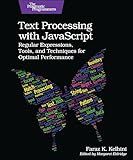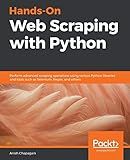Best Regex Tools for Data Analysis to Buy in December 2025

flex & bison



Text Processing with JavaScript: Regular Expressions, Tools, and Techniques for Optimal Performance



Hands-On Web Scraping with Python: Perform advanced scraping operations using various Python libraries and tools such as Selenium, Regex, and others



Parsing with Perl 6 Regexes and Grammars: A Recursive Descent into Parsing



Practical Usage of Regular Expressions: An Introduction to Regexes for Translators



sed & awk: UNIX Power Tools (Nutshell Handbooks)



CRAN Recipes: DPLYR, Stringr, Lubridate, and RegEx in R


To extract specific digits from a pandas column using regex, you can use the str.extract() function in pandas with a regular expression pattern that matches the desired digits. The regular expression pattern should include capturing groups () around the digits you want to extract. This will allow you to retrieve the specific digits from the column and create a new column or variable with just the extracted numbers.
How to extract hexadecimal values from a pandas column using regex?
You can extract hexadecimal values from a pandas column using the str.extract() method with regex pattern. Here is an example code snippet:
import pandas as pd
Create a sample dataframe
data = {'col1': ['abc 0xFF', 'def 0x1A2B', 'ghi 0xCDEF']} df = pd.DataFrame(data)
Extract hexadecimal values using regex
df['hex_values'] = df['col1'].str.extract(r'0x([A-Fa-f0-9]+)')
Display the dataframe with extracted hexadecimal values
print(df)
In the above code, we create a sample dataframe with a column 'col1' containing strings with hexadecimal values. We then use the str.extract() method along with the regex pattern "0x([A-Fa-f0-9]+)" to extract the hexadecimal values from each string. The extracted values are stored in a new column 'hex_values'. Finally, we display the dataframe with the extracted hexadecimal values.
What is regex and how can it be used to extract specific digits from a pandas column?
Regex, short for regular expression, is a powerful tool that allows users to define search patterns for text. It is commonly used in data manipulation and text processing to extract specific information from a larger body of text.
In the context of pandas, regex can be used to extract specific digits from a column by applying the str.extract() method. Here's an example of how you can use regex to extract specific digits from a pandas column:
import pandas as pd
Create a sample DataFrame
data = {'column': ['123abc', '456def', '789ghi']} df = pd.DataFrame(data)
Use regex to extract digits from the 'column' column
df['extracted_digits'] = df['column'].str.extract('(\d+)')
print(df)
In the example above, the str.extract() method is used to extract the digits from the 'column' column. The regex pattern (\d+) is used to match one or more digits in each string. The extracted digits are then stored in a new column called 'extracted_digits'.
By using regex in this way, you can easily extract specific digits or patterns from a pandas column for further analysis or manipulation.
How to extract a specific sequence of characters from a pandas column using regex?
You can use the str.extract() method in pandas along with a regular expression to extract a specific sequence of characters from a column. Here's an example:
import pandas as pd
Create a sample dataframe
data = {'text': ['ABC123', 'XYZ456', '123ABC']} df = pd.DataFrame(data)
Use str.extract() with a regular expression to extract the characters 'ABC' from the 'text' column
df['sequence'] = df['text'].str.extract(r'(ABC)')
print(df)
In this example, the regular expression r'(ABC)' is used to extract the sequence of characters 'ABC' from the 'text' column. The extracted sequences will be stored in a new 'sequence' column in the dataframe. You can modify the regular expression to match any specific sequence of characters you want to extract.
What is the difference between regex and other methods of data extraction in pandas?
Regex, short for regular expressions, is a powerful tool used for pattern matching and string manipulation. It allows users to specify a pattern to match within a text, making it perfect for extracting specific data from strings.
On the other hand, other methods of data extraction in pandas, such as the str.extract method, provide a more user-friendly approach to extracting data from strings in a DataFrame. These methods are simpler to use and do not require the knowledge of regex. They are designed to handle common data extraction tasks in a more intuitive way.
The main difference between regex and other methods of data extraction in pandas is the level of complexity and flexibility they offer. Regex allows for highly customizable pattern matching, making it suitable for more complex data extraction tasks. Other methods in pandas, while less flexible, are easier to use and sufficient for many common data extraction needs.
